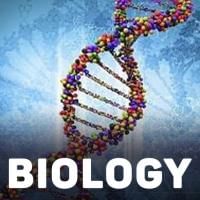NEET Exam > NEET Questions > The TCA cycle starts witha)Condensationb)Dehy...
Start Learning for Free
The TCA cycle starts with
- a)Condensation
- b)Dehydrogenation
- c)Phosphorylation
- d)Decarboxylation
Correct answer is option 'A'. Can you explain this answer?
Verified Answer
The TCA cycle starts witha)Condensationb)Dehydrogenationc)Phosphorylat...
The TCA cycle starts with the condensation of acetyl group with oxaloacetic acid (OAA) and water to yield citric acid.
Most Upvoted Answer
The TCA cycle starts witha)Condensationb)Dehydrogenationc)Phosphorylat...
The TCA (tricarboxylic acid) cycle, also known as the Krebs cycle or citric acid cycle, is a metabolic pathway that occurs in the mitochondria of eukaryotic cells. It is responsible for the oxidation of acetyl-CoA, derived from carbohydrates, fats, and proteins, to produce energy in the form of ATP. The TCA cycle begins with a process called condensation.
Condensation
In this process, the acetyl group from acetyl-CoA is combined with oxaloacetate to form citrate, a six-carbon molecule. This reaction is catalyzed by the enzyme citrate synthase, and it requires the hydrolysis of one molecule of ATP.
Dehydrogenation
The next step in the TCA cycle is dehydrogenation, which involves the removal of hydrogen atoms from the citrate molecule. This reaction is catalyzed by the enzyme aconitase, and it produces a molecule called cis-aconitate. The cis-aconitate molecule is then converted to isocitrate by the enzyme aconitase.
Decarboxylation
The third step in the TCA cycle is decarboxylation, which involves the removal of a carbon dioxide molecule from isocitrate. This reaction is catalyzed by the enzyme isocitrate dehydrogenase, and it produces a molecule called alpha-ketoglutarate. During this reaction, two hydrogen atoms are also removed, which are transferred to NAD+ to produce NADH.
Further steps
The alpha-ketoglutarate molecule then undergoes another round of dehydrogenation and decarboxylation to produce the molecule succinyl-CoA. This reaction is catalyzed by the enzyme alpha-ketoglutarate dehydrogenase complex, and it produces a molecule of NADH. Succinyl-CoA then reacts with a molecule of GDP and inorganic phosphate to produce a molecule of GTP and succinate. This reaction is catalyzed by the enzyme succinyl-CoA synthetase.
The succinate molecule is then oxidized to produce fumarate, which is catalyzed by the enzyme succinate dehydrogenase. This reaction also produces a molecule of FADH2. Fumarate is then converted to malate by the enzyme fumarase. Finally, malate is oxidized to produce oxaloacetate, which is catalyzed by the enzyme malate dehydrogenase. This reaction also produces a molecule of NADH.
Conclusion
In conclusion, the TCA cycle starts with the process of condensation, in which the acetyl group from acetyl-CoA is combined with oxaloacetate to form citrate. The cycle then proceeds through a series of dehydrogenation, decarboxylation, and other reactions to produce ATP, NADH, and FADH2, which can be used for energy production.
Condensation
In this process, the acetyl group from acetyl-CoA is combined with oxaloacetate to form citrate, a six-carbon molecule. This reaction is catalyzed by the enzyme citrate synthase, and it requires the hydrolysis of one molecule of ATP.
Dehydrogenation
The next step in the TCA cycle is dehydrogenation, which involves the removal of hydrogen atoms from the citrate molecule. This reaction is catalyzed by the enzyme aconitase, and it produces a molecule called cis-aconitate. The cis-aconitate molecule is then converted to isocitrate by the enzyme aconitase.
Decarboxylation
The third step in the TCA cycle is decarboxylation, which involves the removal of a carbon dioxide molecule from isocitrate. This reaction is catalyzed by the enzyme isocitrate dehydrogenase, and it produces a molecule called alpha-ketoglutarate. During this reaction, two hydrogen atoms are also removed, which are transferred to NAD+ to produce NADH.
Further steps
The alpha-ketoglutarate molecule then undergoes another round of dehydrogenation and decarboxylation to produce the molecule succinyl-CoA. This reaction is catalyzed by the enzyme alpha-ketoglutarate dehydrogenase complex, and it produces a molecule of NADH. Succinyl-CoA then reacts with a molecule of GDP and inorganic phosphate to produce a molecule of GTP and succinate. This reaction is catalyzed by the enzyme succinyl-CoA synthetase.
The succinate molecule is then oxidized to produce fumarate, which is catalyzed by the enzyme succinate dehydrogenase. This reaction also produces a molecule of FADH2. Fumarate is then converted to malate by the enzyme fumarase. Finally, malate is oxidized to produce oxaloacetate, which is catalyzed by the enzyme malate dehydrogenase. This reaction also produces a molecule of NADH.
Conclusion
In conclusion, the TCA cycle starts with the process of condensation, in which the acetyl group from acetyl-CoA is combined with oxaloacetate to form citrate. The cycle then proceeds through a series of dehydrogenation, decarboxylation, and other reactions to produce ATP, NADH, and FADH2, which can be used for energy production.
Free Test
FREE
| Start Free Test |
Community Answer
The TCA cycle starts witha)Condensationb)Dehydrogenationc)Phosphorylat...
The TCA cycle is a central pathway into which many metabolites feed. It consists of a number of reactions which generate NADH and FADH₂ which can in turn be used by the oxidative phosphorylation pathway to generate ATP. The TCA cycle occurs in the matrix of the mitochondria.

|
Explore Courses for NEET exam
|

|
Question Description
The TCA cycle starts witha)Condensationb)Dehydrogenationc)Phosphorylationd)DecarboxylationCorrect answer is option 'A'. Can you explain this answer? for NEET 2025 is part of NEET preparation. The Question and answers have been prepared according to the NEET exam syllabus. Information about The TCA cycle starts witha)Condensationb)Dehydrogenationc)Phosphorylationd)DecarboxylationCorrect answer is option 'A'. Can you explain this answer? covers all topics & solutions for NEET 2025 Exam. Find important definitions, questions, meanings, examples, exercises and tests below for The TCA cycle starts witha)Condensationb)Dehydrogenationc)Phosphorylationd)DecarboxylationCorrect answer is option 'A'. Can you explain this answer?.
The TCA cycle starts witha)Condensationb)Dehydrogenationc)Phosphorylationd)DecarboxylationCorrect answer is option 'A'. Can you explain this answer? for NEET 2025 is part of NEET preparation. The Question and answers have been prepared according to the NEET exam syllabus. Information about The TCA cycle starts witha)Condensationb)Dehydrogenationc)Phosphorylationd)DecarboxylationCorrect answer is option 'A'. Can you explain this answer? covers all topics & solutions for NEET 2025 Exam. Find important definitions, questions, meanings, examples, exercises and tests below for The TCA cycle starts witha)Condensationb)Dehydrogenationc)Phosphorylationd)DecarboxylationCorrect answer is option 'A'. Can you explain this answer?.
Solutions for The TCA cycle starts witha)Condensationb)Dehydrogenationc)Phosphorylationd)DecarboxylationCorrect answer is option 'A'. Can you explain this answer? in English & in Hindi are available as part of our courses for NEET.
Download more important topics, notes, lectures and mock test series for NEET Exam by signing up for free.
Here you can find the meaning of The TCA cycle starts witha)Condensationb)Dehydrogenationc)Phosphorylationd)DecarboxylationCorrect answer is option 'A'. Can you explain this answer? defined & explained in the simplest way possible. Besides giving the explanation of
The TCA cycle starts witha)Condensationb)Dehydrogenationc)Phosphorylationd)DecarboxylationCorrect answer is option 'A'. Can you explain this answer?, a detailed solution for The TCA cycle starts witha)Condensationb)Dehydrogenationc)Phosphorylationd)DecarboxylationCorrect answer is option 'A'. Can you explain this answer? has been provided alongside types of The TCA cycle starts witha)Condensationb)Dehydrogenationc)Phosphorylationd)DecarboxylationCorrect answer is option 'A'. Can you explain this answer? theory, EduRev gives you an
ample number of questions to practice The TCA cycle starts witha)Condensationb)Dehydrogenationc)Phosphorylationd)DecarboxylationCorrect answer is option 'A'. Can you explain this answer? tests, examples and also practice NEET tests.

|
Explore Courses for NEET exam
|

|
Signup for Free!
Signup to see your scores go up within 7 days! Learn & Practice with 1000+ FREE Notes, Videos & Tests.


















